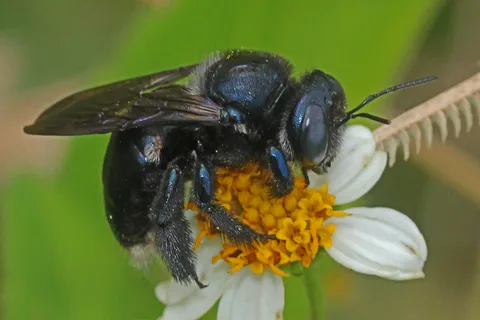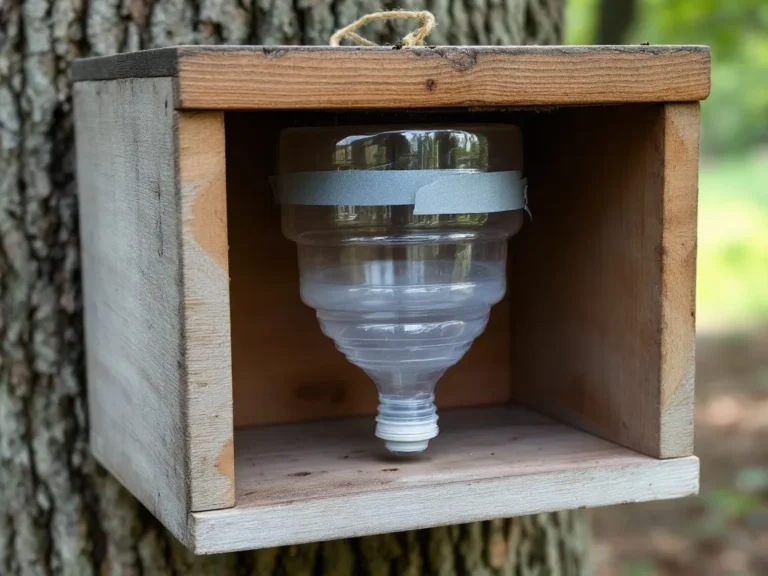With the arrival of warmer months, you may notice some uninvited guests buzzing around your home—carpenter bees. These large, black-and-yellow insects are often mistaken for bumblebees, but they come with a bit of a reputation problem. Homeowners frequently see them as pests, thanks to their tendency to bore holes into wooden structures. But beneath their destructive tendencies lies an important role in our ecosystem as pollinators. So, should we view these bees as friend or foe? Let’s dive into the world of carpenter bees to understand their significance and how best to coexist with them.
Understanding Carpenter Bees: More Than Just a Nuisance
Carpenter bees are unique in their appearance and behavior. Unlike bumblebees, which nest in the ground, carpenter bees prefer to carve out nests in wood, often leading to headaches for homeowners when they target decks, eaves, or fences. Their name comes from their habit of burrowing into wood to create tunnels where they lay their eggs. This behavior can cause cosmetic damage and, over time, potentially structural issues if the infestations are significant.
However, it’s not all bad news. Wood bees are actually excellent pollinators. They play a crucial role in pollinating various plants, flowers, and crops, contributing to biodiversity and the health of natural ecosystems. Their ability to perform buzz pollination—a technique where they vibrate flowers to release more pollen—makes them especially valuable for pollinating certain plants that other bees might ignore.
Balancing Benefits and Drawbacks: Managing Carpenter Bees Effectively
Given their role as pollinators, it’s clear that carpenter bees aren’t just pests. So, how can homeowners protect their property without harming these beneficial insects? The key lies in understanding their behavior and taking preventive measures. Here are some tips:
- Preventive Maintenance: Carpenter bees are attracted to bare or weathered wood. To deter them, keep wooden surfaces painted or stained, as they are less likely to bore into treated wood. Regular maintenance of outdoor structures can go a long way in preventing infestations.
- Use Natural Deterrents: Citrus oil, almond oil, and other natural repellents can help keep carpenter bees at bay. Spraying these oils on areas where bees are active can discourage them from nesting.
- Provide Alternatives: Consider installing bee houses or other nesting alternatives to lure carpenter bees away from your home. This not only protects your property but also provides the bees with a safe place to nest.
- Seal and Repair: If you spot the beginnings of a carpenter bee nest, seal the entrance with caulk or putty after ensuring the bees have left. This prevents them from returning and reusing the tunnels.
- Avoid Harmful Chemicals: Whenever possible, avoid using pesticides, as these can harm not just carpenter bees but also other beneficial insects. Opt for environmentally friendly options that target specific pests without causing collateral damage.
The Bigger Picture: Why Carpenter Bees Matter
Beyond their direct impact on homes, carpenter bees serve as a reminder of the broader challenges facing pollinators today. Habitat loss, pesticide use, and climate change all threaten bee populations, making it more important than ever to protect these essential creatures. By finding ways to coexist with carpenter bees, we contribute to the health of our ecosystems and support the critical services that all pollinators provide.
The dilemma of the carpenter bee—friend or foe—ultimately comes down to perspective. While their nesting habits can be inconvenient, their role in pollination is invaluable. By taking simple steps to manage their presence responsibly, we can strike a balance that benefits both our homes and the natural world.
Final Toughts
Carpenter bees are more than just a summer nuisance; they are vital pollinators with a crucial role in supporting biodiversity. While it’s understandable to want to protect your property from their wood-boring tendencies, it’s equally important to recognize their ecological value. By using preventive measures and environmentally friendly management strategies, homeowners can reduce the impact of carpenter bees without harming these beneficial insects. In doing so, we can all contribute to a healthier, more balanced environment.
For more details, read the full article here.





